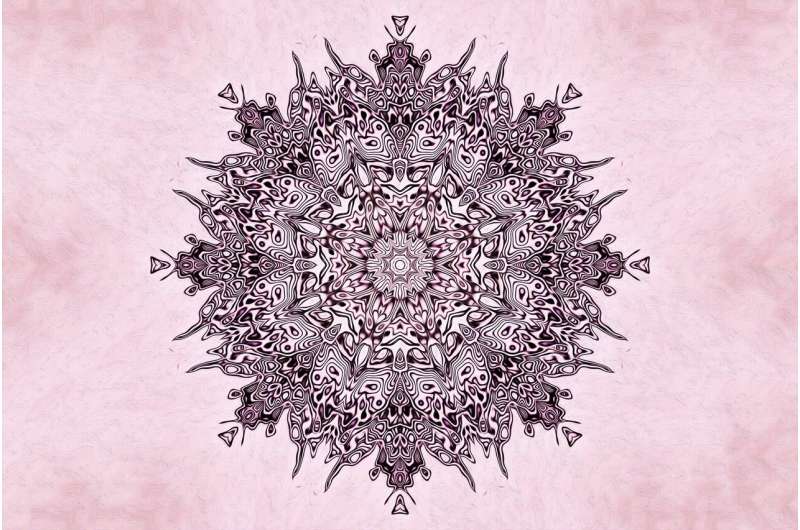Credit: CC0 Public Domain
Penn doctoral student David Yaden practices mindfulness, a simple habit he uses to re-center himself after stressful situations. It's also one that's backed by science, having been analyzed and written about for decades. The same is true for yoga, another intervention borne out of a religious practice that has become mainstream.
As part of his work with Martin Seligman in Penn's Positive Psychology Center, Yaden began thinking about where typical psychological interventions derive. "Generally, they're from researchers who think them up and test them from theory," he says. Instead, "why don't we look back into humanity's collective history at the rituals and practices that people have been doing for hundreds or thousands of years?"
The result of that reframing is "Rituals and Practices in World Religions," a new book Yaden co-edited with Yukun Zhao of China's Tsinghua University, Kaiping Peng of the University of California, Berkeley, and Andrew Newberg of Thomas Jefferson University in Philadelphia.
Taking a page from the playbook of James Pawelski of Penn's Positive Psychology Center, who has been forging conversations between scholars and scientists, Yaden and colleagues turned to experts on the religions of the world, asking them to highlight individual practices and group-based rituals they felt were important. "We left it to scholars," Yaden explains. "We told them, "Mindfulness and yoga are being studied by scientists. What are we missing from other world religions? What are rituals and practices that are somewhat similar but should receive more attention?'"
For the book, 15 academics wrote about 13 religions, including Hinduism and Buddhism, Baha'i and Humanism. Each chapter provides a brief overview and then delves into specific practices. Yaden describes the impetus for the book, plus why now is the right time for it.
What spurred a book like this?
I'm a fan of research on mindfulness and yoga, and there are hundreds of studies on them; these are practiced in hospitals and therapy rooms across the country. But we realized that on a daily basis, around the world, hundreds of millions of people are practicing prayer and other kinds of rituals that psychology really hasn't looked at.
The editors of the book are all scientists, and the idea was that scientists have a lot to learn from scholars. Justin McDaniel, a professor in the Department of Religious Studies at Penn, wrote the forward to the book and emphasized this point. It was a fascinating and humbling experience to learn from each of these scholars.
Why was now the right time for this book?
Researchers and clinicians are becoming more innovative as they search for interventions to improve mental health. It seemed important that these new ideas don't come just from their creativity but are also informed by humanity's collective history, by the interventions that have been practiced for hundreds or thousands of years, and, in some cases, by millions of people. The idea was to learn from scholars and to keep these historical and scholarly and cross-cultural perspectives in mind as we consider ways to address or enhance well-being.
Would you say this book is geared toward academics or to a broader, general audience?
It's primarily to inform research and clinical contexts. I personally am fascinated by religious scholarship. Each chapter describes the history and beliefs of many major world religions, which is interesting in its own right. But I hope that researchers interested in these subjects will continue to study mindfulness and yoga and see that there are dozens of others to consider as well. What I also hope and expect is that neuroscientists and psychologists will begin to study other rituals and practices in the coming years.
That being said, if there are people like me who are inherently fascinated by various approaches to life, there's a lot to learn. Tolerance is often aided by understanding, and so we hope that this book will aid in people understanding various religious and non-religious traditions better, even rituals in their own traditions they might not be aware of. Many Christians don't know, for example, that Christianity includes meditation practices similar to some Buddhist forms of meditation.
Can you describe a few of the other traditions the book lays out?
One that's interesting is sitting shiva in the Judaism chapter. Many people know about this ritual, but seeing the meaning that community support can provide to those going through difficult experiences and struggling with grief was really moving and profound. You can see so many psychological processes at work, particularly related to community support. Sometimes in psychology we don't acknowledge the community factors that can support mental health.
Another interesting one was by Leah Comeau in the Hinduism chapter describing drawing kolams, ornate images in front of one's house as a form of prayer and of welcome, which involves this ongoing creativity and sense of meaning and community.
There's also a description of the ayahuasca ceremonies. Why is that one particularly compelling?
It's a nice connection to what's happening in contemporary clinical research. Johns Hopkins just opened a Center for Psychedelic & Consciousness Research. There's this really nice convergence where one of our chapters describes these rituals involving psychedelic compounds, and just in the past year we have a major research center now exploring these compounds for use in clinical settings. People are looking to new, creative ways now more than ever, and seeing this connection between the indigenous rituals and a new clinical research center was a wow moment for us.
Does the book touch on every religion you'd hoped to cover?
This is just a first step in expanding this conversation. There are hundreds, if not thousands, of rituals and practices that are not captured. This is just a sampling. I wish we had all of them, but if we did, it would be a very long book.
Provided by University of Pennsylvania






















